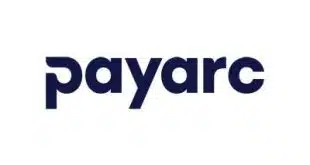People who cover financial services got all excited when JPMorgan Chase chairman and chief executive Jamie Dimon said a bad word (which the transcript politely says is “indiscernible”) in describing his feelings, during the company’s fourth-quarter earnings call, about technology companies getting into banking. But in the midst of the pearl clutching, an important part of the call went unnoticed.
Dimon laid out why he thinks some newer entrants into the financial-services business have an unfair competitive advantage because of how regulations are written. “There are examples of unfair competition, which we will do something about eventually. People who make a lot more on debit because they operate under certain things,” Dimon said on the Jan. 15 call.
Later in the call, he addresses the notion of third-party bank issuers. “If a fintech company uses a white-label bank to process their business, they’re basically a bank. And what the regulators do with that I don’t know,” Dimon said.
Dimon’s thinking seems to be shared by the leaders of other large institutions, and they have ideas about how the regulators could level the playing field.
A December letter from The Clearing House, a trade association and payments company owned by some of the largest banks in the United States, asks the Federal Reserve to issue a new FAQ “and revisions to the official commentary to Regulation II that close gaps in the availability of the small issuer exemption between fintech companies and financial institutions.”
TCH’s letter argues that fintechs are linking with small issuers “to inappropriately utilize the small issuer exemption to avoid the interchange fee limitations under EFTA and Regulation II.” It says that if an issuer does not hold all the funds accessible by a debit or prepaid card, the card is decoupled debit and not eligible for the small-issuer exemption. It adds that the board should not let the exemption apply to programs where the combined assets of the bank and third party are greater than or equal to $10 billion.
This is all very technical, but it could have big effects in the payments industry, particularly for neobanks and prepaid card programs. A blog by Sarah Grotta, the director of debit and alternative products at Mercator Advisory Group, says that TCH’s proposal, if adopted, could decimate both prepaid and banking-as-a-service (BaaS) programs by cutting their interchange income by about 60%.
“Revenue will drop for nearly all non-government prepaid programs and BaaS relationships regardless of type as most issuers have a least one large client, or a combination of several clients with significant assets that would put them over the $10 billion mark and in the regulated interchange category,” Grotta writes.
As of mid-February, the Fed had not given any indication that it plans to do anything in regard to TCH’s letter. However, the remedy the letter is asking for—namely, an FAQ and guidance—does not require the Fed to seek public comment or go through any formal process. It could simply issue an FAQ and change the business model of prepaid card programs and fintechs overnight.
There could be unintended consequences from the recommendations in the letter. For example, many prepaid card program managers who use multiple banks to diversify risk—as opposed to evading regulations—might run into problems in providing services to financially vulnerable Americans. Large payroll providers who offer payroll cards as a service might also have challenges serving unbanked people under the suggested asset considerations.
If the Fed does feel the need to act, then it should make sure to seek input from other stakeholders who could be affected.
— Ben Jackson, bjackson@ipa.org




